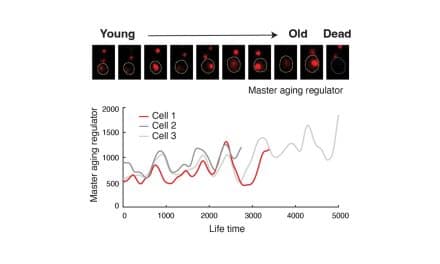
New ultra-high-density sulfonic acid PEM for fuel cells

Researchers have developed a new ultra-high-density sulfonic acid polymer electrolyte membrane for use in fuel cells
In a project commissioned by the New Energy and Industrial Technology Development Organization (NEDO), researchers at Nagoya University in Japan have developed poly(styrenesulfonic acid)-based polymer electrolyte membranes (PEM) with a high density of sulfonic acid groups.
One of the key components of environmentally friendly polymer electrolyte fuel cells is a polymer electrolyte membrane.
It generates electrical energy through a reaction between hydrogen and oxygen gases. Examples of practical fuel cells include fuel cell vehicles (FCVs) and fuel cell combined heat and power (CHP) systems.
The best-known PEM is a membrane based on a perfluorosulfonic acid polymer, such as Nafion, which was developed by DuPont in the 1960s.
It has a good proton conductivity of 0.1S/cm at 70-90°C under humidified conditions. Under these conditions, protons can be released from sulfonic acid groups.
Proton conduction in such membranes typically depends on the proton transport mechanism between protons, sulfonic acid groups, and water molecules.
Typically, the higher the density of the sulfonic acid groups in the membrane, the higher the density of protons that can be released from the sulfonic acid groups; therefore, the higher density of the sulfonic acid groups usually results in higher proton conductivities.
- 3D battery imaging reveals the secret real-time life of lithium metal cells
- Stretchable battery packaging could power wearable devices
- Lithium-ion battery materials degradation better understood
Sulfonic acid groups
However, using a conventional synthesis process, it is difficult to synthesise PEMs with a high density of sulfonic acid groups. For instance, to increase the density of sulfonic acid groups in a poly(styrenesulfonic acid)-based PEM, the sulfonation reaction must be carried out over long hours or under severe conditions.
It usually uses highly oxidising substances, such as fuming sulfuric acid and chlorosulfonic acid. Unfortunately, this leads to undesirable side reactions, such as cleavage of the backbone chains of the polymer.
Therefore, to avoid unwanted side reactions during polymer synthesis, commercially available PEMs are usually synthesised to have a low density of sulfonic acid groups.
For commercially available Nafion or poly(styrenesulfonic acid)-based PEMs such as Selemion by AGC, the ion exchange capacity (IEC), an index of the density of acid groups, is typically less than 1.0meq/g.
In the paper, Atsushi Noro and colleagues at the Graduate School of Engineering, Nagoya University and from the Institutes of Innovation for Future Society also Nagoya University, have developed poly(styrenesulfonic acid)-based PEM with an ultrahigh density of sulfonic acid groups.
The IEC of the PEM was 5.0meq/g. This is five times higher than the IEC of typical commercially available PEMs such as Nafion or Selemion.
Its proton conductivity at 80°C under 90%RH (a common operating condition for polymer electrolyte fuel cells) was 0.93S/cm. This is six times higher than the conductivity of Nafion (0.15S/cm) or Selemion (0.091S/cm) under the same measurement conditions.
Future fuel cells must be operated under more severe operating conditions such as higher temperatures and lower humidities.
This study will contribute to the synthesis and development of next-generation higher-performance PEMs exhibiting a good conductivity of 0.1S/cm or higher under such severe conditions.
The study will also contribute to the goal of reaching a net-zero carbon society.
Image: Researchers develop a new ultra-high-density sulfonic acid polymer electrolyte membrane for fuel cells, which can be used for vehicles and combined heat and power systems. © Atsushi Noro.















